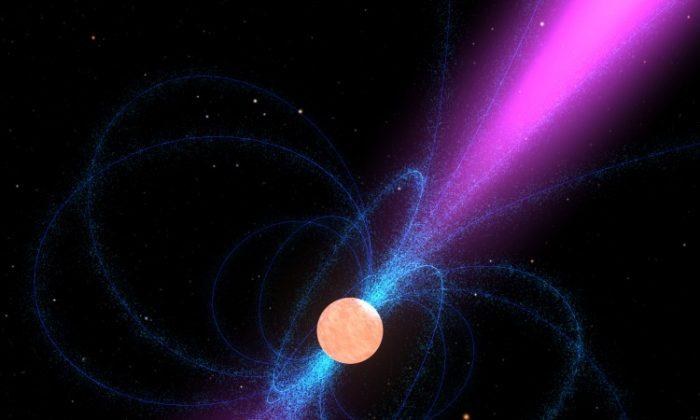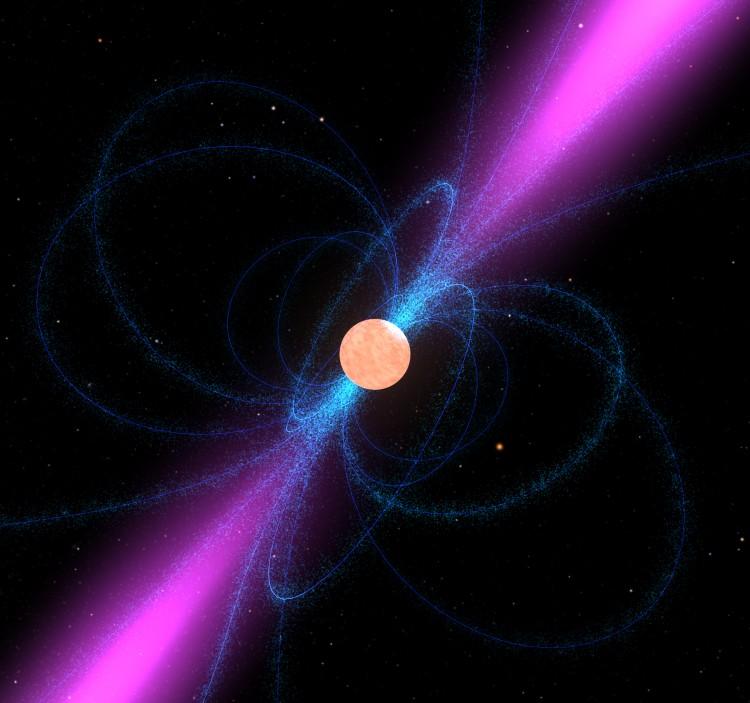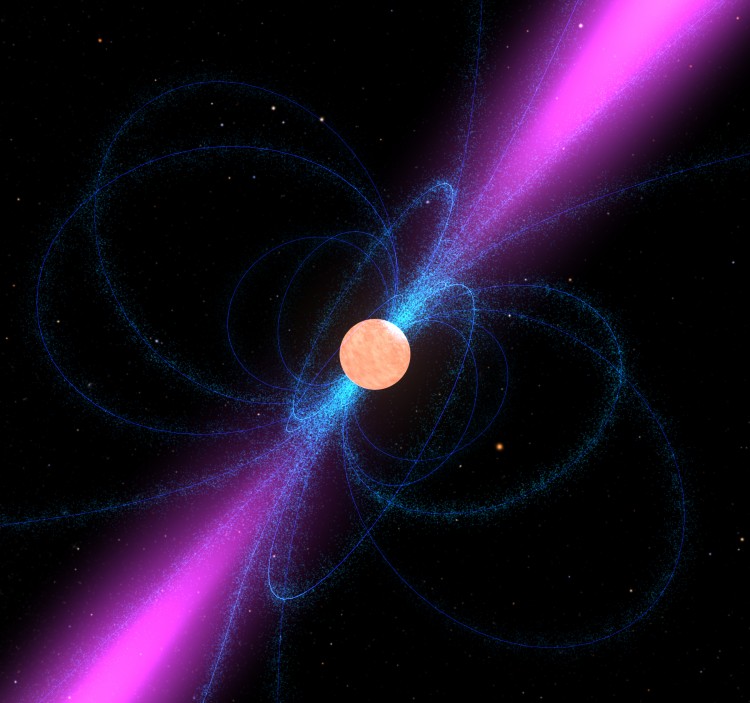Pulsars are highly magnetized, rapidly rotating neutron stars that emit beams of radio waves from their magnetic poles. Astronomers are now using them to test one of Einstein’s theories and study nuclear physics.
Once massive stars that exploded as supernovae, neutron stars have a mass greater than our sun, but are only as big as a medium-sized city. The beams emitted by a pulsar can be picked up by radio telescopes on Earth when the pulsar’s rotation aligns them with our planet, allowing astronomers to measure the timing between these “pulses.”
Albert Einstein’s theory of General Relativity predicts how gravity behaves in our solar system, but other theories suggest that gravity behaves differently inside a neutron star, because of its extremely dense internal structure.
Three pulsar researchers talked about the results of their work at at the American Association for the Advancement of Science meeting in Vancouver, Canada, on Feb. 19.
“By carefully timing pulsar pulses, we can precisely measure the properties of the neutron stars,” said Ingrid Stairs at the University of British Columbia in a press release.
“Several sets of observations have shown that pulsars’ motions are not dependent on their structure, so General Relativity is safe so far.”
Pulsar research on binary systems involving another neutron star or pulsar has also provided indirect evidence of the existence of gravitational waves.
According to Einstein’s theory, masses moving in our universe should create disturbances in space-time, forming gravitational waves. They may be directly detectable by monitoring the timing of pulsars scattered throughout the Milky Way to look for any variations caused by the movement of gravitational waves. The scientists describe this Pulsar Timing Array (PTA) as being like a gigantic “telescope” of sorts.
“Pulsars are such extremely precise timepieces that we can use them to detect gravitational waves in a frequency range to which no other experiment will be sensitive,” said Benjamin Stappers at the U.K.’s University of Manchester in the release.
Such PTAs could even pinpoint gravitational waves from dual supermassive black holes and other cosmic events in our early universe.
“At the moment, we can only place limits on the existence of the very low-frequency waves we’re seeking, but planned expansion and new telescopes will, we hope, result in a direct detection within the next decade,” Stappers explained.
The density of pulsars is much greater than that of atomic nuclei, and their physics remains quite mysterious.
“By measuring the masses of neutron stars, we can put constraints on their internal physics,” said Scott Ransom of the National Radio Astronomy Observatory in the release.
“Just in the past three to four years, we’ve found several massive neutron stars that, because of their large masses, rule out some exotic proposals for what’s going on at the centers of neutron stars.”






